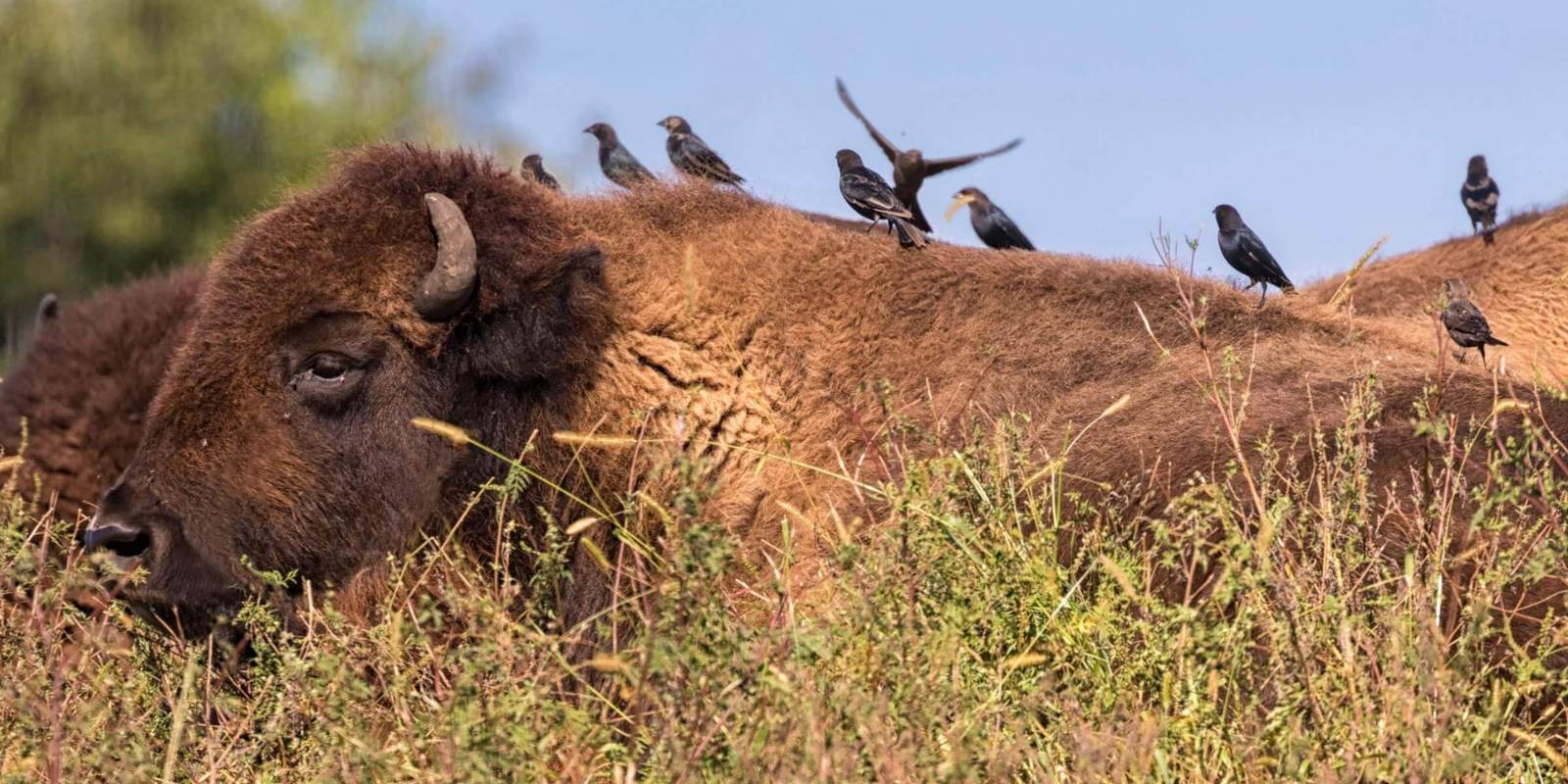Caption for photo: Brown-headed Cowbirds and bison. Credit: Natalia Kuzmina/Alamy / Audubon Magazine
SEPTEMBER 15, 2023
Excerpt from article in Audubon Magazine
By Zoe Grueskin
A new initiative to bring back the gargantuan grazers could have major benefits for grassland species.
Standing six feet high at the shoulder and weighing as much as 2,400 pounds, an American bison is a force of nature on its own. In a herd? “They’re ecosystem engineers,” says Jason Baldes, tribal buffalo program manager for the National Wildlife Federation and a member of the Eastern Shoshone Tribe from the Wind River Indian Reservation in Wyoming.
A healthy source of disturbance to dynamic grasslands, American bison—or buffalo, a name traced back to French fur trappers and used by the Lakota, the Shoshone, and other Native nations who have lived alongside the animals for centuries—alter the landscape in myriad ways. From spreading seeds caught in their shaggy fur to creating shallow depressions called wallows as they roll in the dirt, which can fill with water and provide valuable habitat, the massive mammals help support diverse communities of plants and animals, including many birds.
“We have a hard time fathoming what the landscape might have looked like with buffalo in great numbers,” Baldes says.

